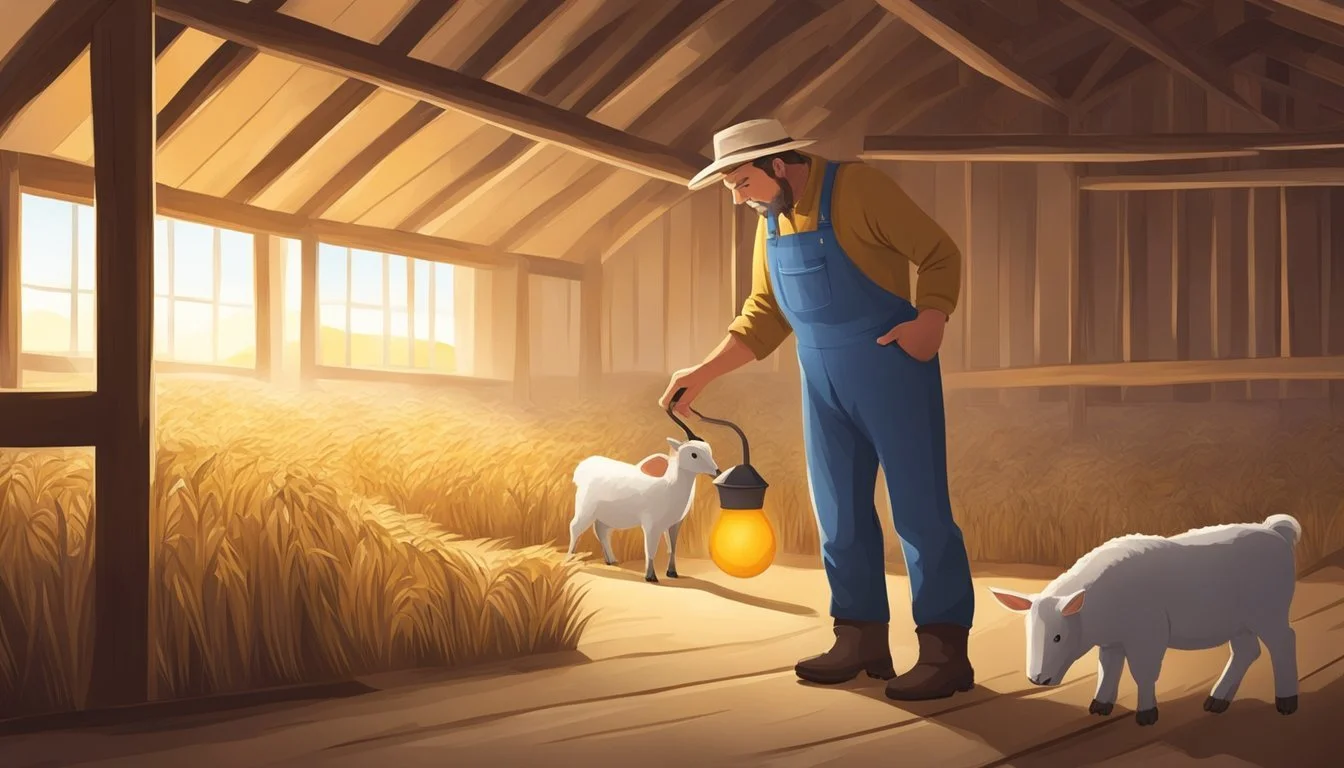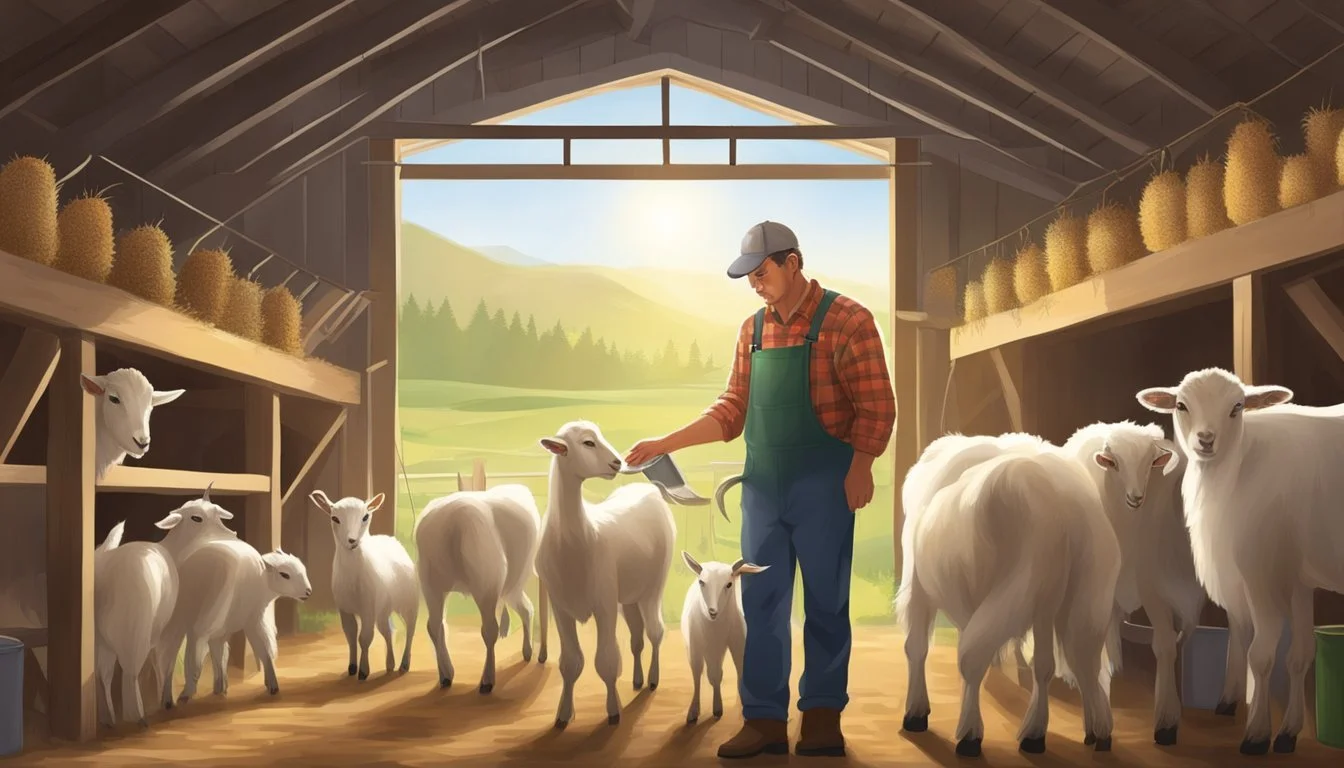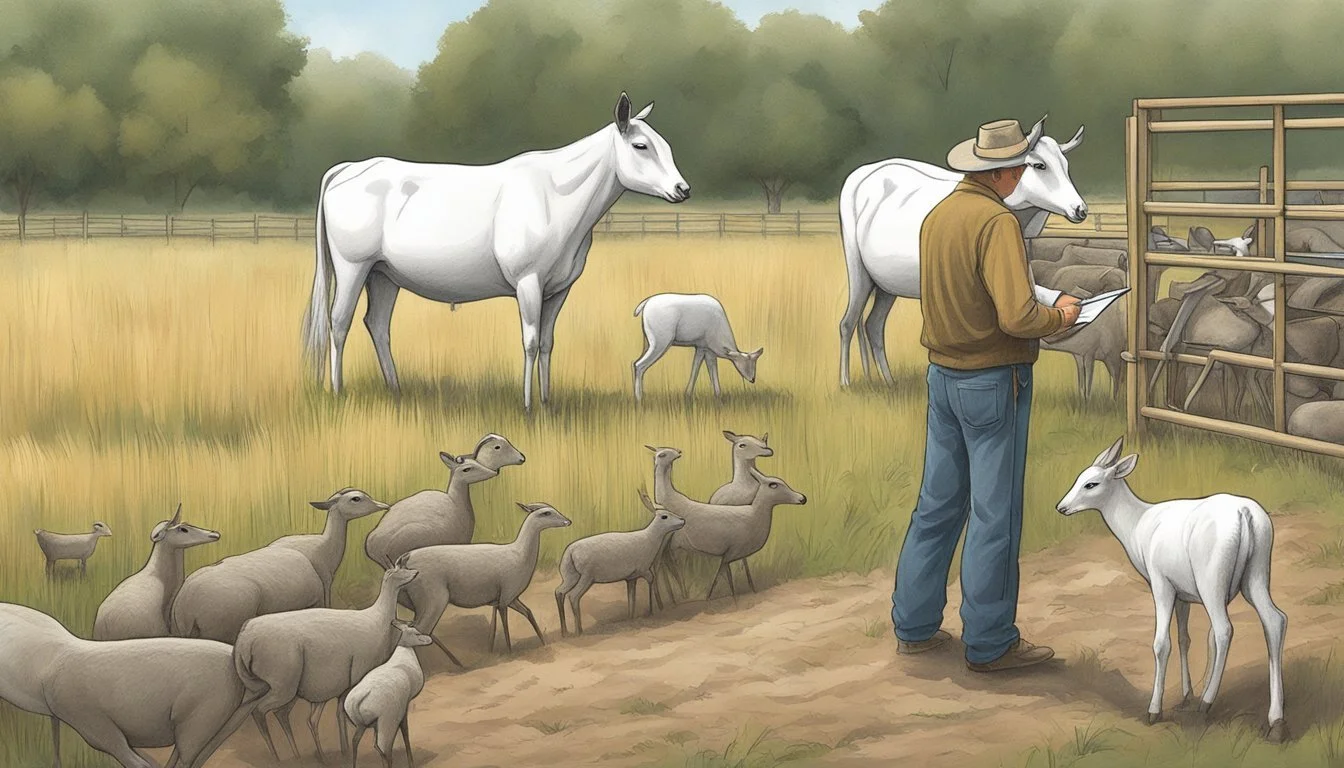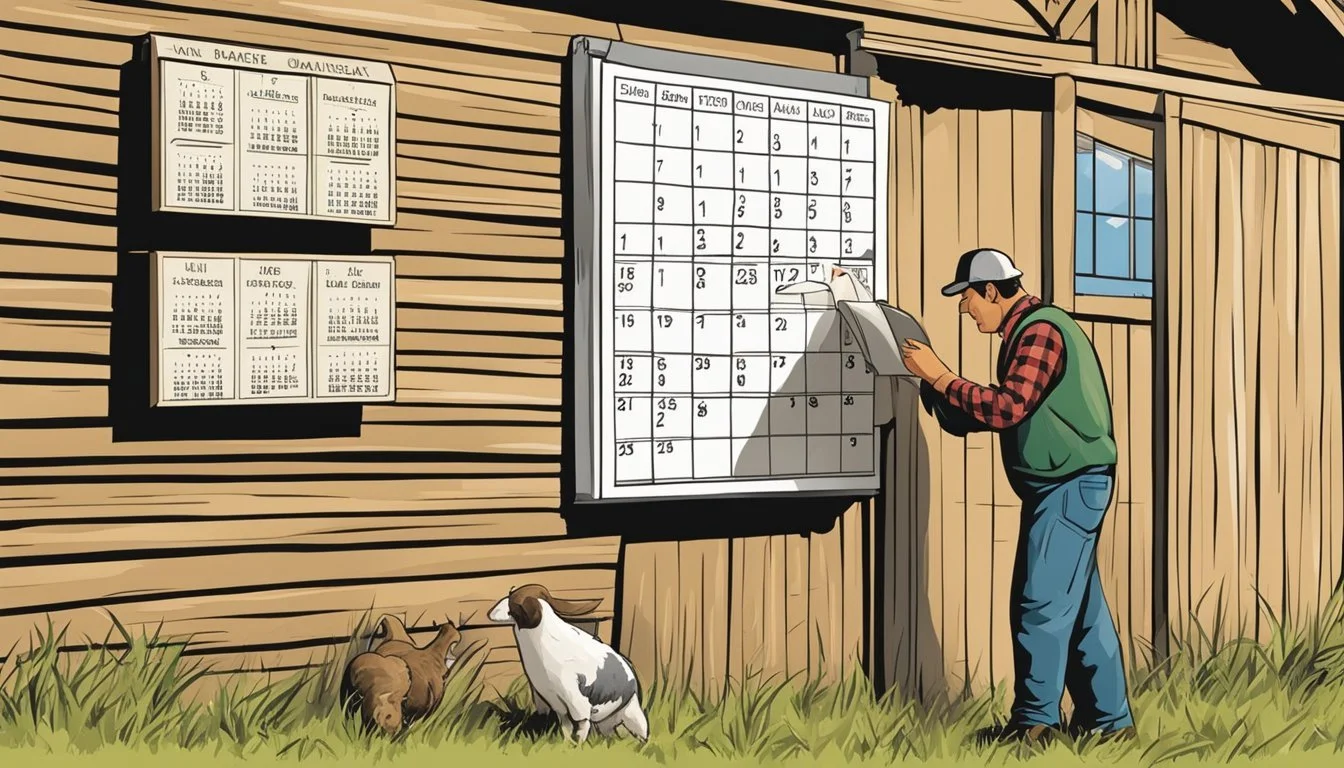How do I manage the breeding cycle to ensure timed kidding in goats?
Managing the breeding cycle of goats is an integral part of a goat owner's role, ensuring that kids are born at a time that aligns with the farm's operational plans and the animals' health needs. Knowledge of the goat reproductive cycle, the correct timing for mating, and understanding the signs of heat in does are critical. A goat's gestation period typically lasts around 150 days, which means that strategic breeding can result in scheduled kidding within quite precise windows of the year.
Successful breeding management also requires attention to the nutritional needs of does and bucks, as well as the provision of proper shelter and care. By controlling the environmental and nutritional factors that influence the reproductive cycle, goat owners can increase fertility rates and improve the chances of a healthy kidding season.
Therefore, a systematic approach to managing the breeding cycle involves observing behavioral cues, tracking the reproductive cycle, and providing an environment conducive to successful mating and gestation. It allows for planned production, better management of herd health, and synchronization of multiple births for efficiency. This management is essential for maintaining a productive and profitable goat farming operation.
Understanding the Breeding Cycle
When managing the breeding cycle, a fundamental understanding of the estrus cycle is crucial, as this is when females are receptive to mating. Seasonal breeders, such as goats, have specific times of the year when they enter estrus, commonly known as being 'in heat'.
Estrus Cycle:
Proestrus: Preparatory stage before the actual heat. Hormones start to fluctuate.
Estrus: The heat period when the female is receptive to the male. Ovulation occurs in this phase.
Metestrus/Diestrus: After the heat ends, the uterus prepares for possible pregnancy.
Anestrus: A phase of inactivity in the reproductive cycle before proestrus starts again.
For goats, the goat breeding season typically occurs in the fall, and knowing this helps breeders plan for doe in heat signs to maximize the fertility and ovulation rate.
Gestation Period is the time from conception to birth and varies between species. For instance, goats have a gestation period of approximately 150 days.
Fertility Management:
Monitor signs of estrus by observing behavior changes or using kits to test hormone levels.
Plan mating during the peak fertility times to control when kids are born, also known as rut in males.
To optimize reproductive success and manage when kids are born, monitoring each stage of the cycle and planning mating accordingly is imperative for successful breeding management.
Managing Breeding Seasons
Managing breeding seasons effectively ensures that the kidding season aligns with the farmer's goals for management and market demands. Timing is critical as it influences climate considerations and reproductive health.
Determining the Best Time to Breed
To determine the best time to breed, one must consider the climate and weather patterns that will prevail when the kids are due. Daylight length can affect the estrous cycle of the animals, with shorter days often stimulating reproductive activity. Temperature plays a significant role in both the breeding and kidding seasons; extreme temperatures can impact the health and survival rates of newborn kids. It is important to work backwards from the desired kidding season to establish a breeding season that considers these factors.
Artificial Insemination vs Natural Breeding
When choosing between artificial insemination and natural breeding, consider the resources available, the reproductive health of the herd, and the desired genetic traits. Artificial insemination allows for more control over genetics and can be scheduled to optimize the breeding season. It requires careful monitoring of estrous signs or synchronization, and the use of a buck rag can be beneficial for timing. In contrast, natural breeding involves a buck being introduced to the doe at the appropriate time based on behavioral estrus signs. Hand breeding—another natural method—ensures that mating occurs at the optimal time for conception without the need for sustained buck presence.
Nutrition and Health
Optimal nutrition and robust health are critical for successful goat reproduction. Integrating precise feeding strategies with diligent health checks can substantially improve pregnancy outcomes and the overall reproductive performance of breeding goats.
Feeding for Optimal Reproduction
For goats to achieve full reproductive potential, their diet must provide ample energy, proteins, vitamins, and minerals. Proper nutrition is particularly crucial during the gestation period, which lasts around 150 days on average. Pregnant does require a balanced diet that often includes:
High-quality forage such as alfalfa hay, which is rich in calcium and protein.
Grains like corn, providing energy but should be offered in moderation to avoid pregnancy toxaemia.
Supplements, if necessary, to fill any nutritional gaps, especially to prevent anemia.
The role of nutrition extends beyond simply feeding; it affects the condition of the doe and the viability of the pregnancy. Applying nutritional management tailored for pregnant does can account for the increased nutritional demands, especially for those carrying multiple kids.
Health Checks and Disease Prevention
Consistent health evaluations conducted by a veterinarian are vital for detecting and managing diseases that can influence reproductive health, such as mastitis or parasitic infections which can lead to anemia. Preventive strategies should include:
Regular fecal examinations to monitor for internal parasites.
Keeping a close eye on body condition to quickly address any signs of inflammation or other health concerns.
Vaccinations and other proactive treatments to protect against common diseases.
Additionally, a Breeding Soundness Exam (BSE) can be conducted to assess the reproductive fitness of both bucks and does before the mating season begins, ensuring they are healthy and capable of successful breeding. This preemptive step is critical in preventing the transmission of potential genetic diseases and increasing the likelihood of pregnancy.
Care During Gestation
Managing the gestation period for dairy goats requires precision and vigilance to ensure the health of the pregnant goat and successful kidding. Understanding the goat gestation period, typically around 150 days, is essential to schedule prenatal care with a veterinarian and prepare the necessary supplies for birth.
Monitoring Pregnancies
A pregnant goat needs regular monitoring to ensure a healthy gestation. This includes tracking the due date using a goat gestation calculator to provide precise care throughout pregnancy. Initiate periodic check-ups with a veterinarian to assess the health of both the doe and the developing kids. It is advisable to maintain detailed records of changes in behavior, appetite, and body condition.
Key considerations include:
Watching for signs of discomfort or illness
Ensuring adequate intake of nutrients and water
Preventing exposure to stress and potential hazards
Preparing for Kidding
As the due date approaches, preparing for kidding is crucial. Setting up a clean, dry, and warm kidding area reduces risk and provides a comfortable environment for the doe to give birth. Gather all supplies beforehand, which should include gloves, lubricant, iodine for disinfecting the navel, and materials to assist with difficult births if necessary.
Ensure the following are ready:
A well-bedded, draft-free area
A kidding kit with the essentials
Plans for immediate colostrum intake by the newborn kids
Adequate housing is essential to protect the pregnant goat, especially as kidding nears. It should shelter the doe from extreme weather and provide her with a stress-free environment. Good prenatal care and accurate knowledge of the gestation period are key to managing the breeding cycle effectively and ensuring the arrival of healthy kids.
Post-Birth Management
Post-birth management in goat farming is critical to ensure the survival and health of newborn kids. Key considerations include immediate postpartum care and effective strategies for lactation and weaning.
Handling Newborn Kids
Immediately following parturition, it is crucial for newborn kids to receive colostrum within the first few hours. This first milk is rich in antibodies and aids in protecting the offspring from diseases. Farm managers should monitor the movement of the kids to ensure they are able to stand and nurse. If assistance is required, manual feeding of colostrum may be necessary. It's important to check that the placenta is expelled completely to prevent any health risks to the doe. Keeping baby goats in a warm, draft-free environment is essential to prevent hypothermia, especially in larger litter sizes where competition for warmth is higher.
Lactation and Weaning Strategies
For successful lactation, does should be well-nourished to promote optimal milk production. Weaning of kids can begin around 8 to 10 weeks after birth. A gradual weaning process is advisable to reduce stress for both the kids and the doe. During weaning, kids should be introduced to high-quality solid foods while still having access to their mother's milk, easing the transition. It's important to maintain proper temperatures and shelter during this period to support the kids' continuing development and survival rates.
Record Keeping and Breeding Analysis
In managing the breeding cycle, meticulous record-keeping and thorough analysis of breeding outcomes are crucial for goat owners, producers, and breeders. They help enhance reproductive health, productivity, and selection processes.
Documenting Breeding Cycles
Goat owners should maintain detailed records of each goat's breeding cycle to control when kids are born. This includes tracking scrotal circumference in males, which can be an indicator of fertility, and recording estrous cycle dates in females. For example, they can start by noting the onset of the doe's estrus and the date of mating. Keeping track of these dates aids in predicting subsequent fertility cycles and facilitating timely breeding intervention.
Breeding Dates:
Date of Heat Observation: MM/DD/YYYY
Date of Mating: MM/DD/YYYY
Expected Next Cycle: MM/DD/YYYY
Producers can leverage this data to schedule breeding for optimal milk and meat production. Regular monitoring and recording are crucial for achieving a controlled breeding season, leading to a more manageable and expected kidding season.
Assessing Breeding Outcomes
The evaluation of breeding outcomes allows producers to make informed decisions on selection for future breeding. This can encompass litter size, maternal abilities, and offspring growth rates, which all play into the long-term strategy for meat and milk production. Breeders should compare these outcomes with the documented breeding cycles to assess the effectiveness of their breeding plan.
Breeding Productivity Table:
Breeding Date: MM/DD/YYYY
Litter Size: Number
Milk Production Post-Kidding: Liters/Day
Meat Production Metrics: Weight Gain Rate
By analyzing these records, they can pinpoint trends or issues in reproductive health, such as lower fertility rates or reduced productivity, and adjust breeding strategies accordingly. The knowledge obtained from both documenting and analyzing breeding cycles is imperative for the continuous improvement of a breeding program.
Breeding Different Goat Breeds
When managing the breeding cycle of goats, special considerations must be taken into account depending on whether the goats are bred for dairy or meat production, as well as their size, particularly in the case of Pygmy and Dwarf goats. Each breed has its own unique management practices to optimize both the breeding process and productivity.
Breeding Dairy Goats vs Meat Goats
Dairy goats, such as LaManchas, Saanens, and Nubians, typically have a defined breeding season which generally falls between August and December. Breeders aim to time the mating so that kids are born during early spring, ensuring a fresh supply of milk in alignment with increased demand. When breeding dairy goats, selection for traits such as milk yield and udder health is crucial.
In contrast, meat goats, like the Boer breed, can often be bred year-round, which gives producers more flexibility when planning kids' birth to meet market demands for meat production. Selection criteria for meat goats focus on growth rate, feed efficiency, and carcass qualities.
Considerations for Pygmy and Dwarf Goats
Pygmy goats and Nigerian Dwarf goats are smaller in size, and breeders must ensure these goats reach a certain percentage of their adult weight before breeding. For successful breeding of smaller goat breeds, it's advisable for a doe to be at least 60-70% of the adult weight, which is typically achieved by 8 months of age.
Litter size is another crucial aspect, as dwarf breeds often have multiple kids per pregnancy. This demands thorough management practices to maintain the health of both the doe and her offspring. Due to their size, these breeds may require additional care and monitoring during the gestation and kidding periods.
Frequently Asked Questions
Managing the breeding cycle in goats is essential for timing the birth of kids, especially if coordinating with specific events such as shows or fairs. Understanding the complexities of the estrus cycle and applying practical guidance can optimize reproduction success and fertility rates.
Dealing with Breeding Challenges
When goat owners face breeding challenges, it is critical to analyze both the male and female goats' health and readiness to breed. Female goats, or does, experience an estrus cycle about every 21 days, and identifying this heat cycle is crucial for successful breeding. Difficulties can arise if does do not show clear signs of heat, making it hard to determine the optimal time for breeding. Hand breeding or controlled breeding can mitigate such difficulties by allowing for close observation and timing of mating when the doe is most receptive.
For male goats, or bucks, being in rut indicates they are ready to breed. Bucks in rut typically show increased restlessness, a strong odor, and may vocalize more frequently. However, fertility issues in bucks can complicate the breeding process. It's essential that bucks are healthy and have been properly tested for fertility before the breeding season begins.
Expert Tips for Beginner Goat Owners
Beginner goat owners should consider the following recommended practices to enhance their breeding experience:
Know Your Goats: Begin by learning about the goat's specific breeding habits and signs of readiness. Does may exhibit signs such as tail wagging, bleating, and increased interest in bucks.
Timing is Key: Aim to breed does when they are between the ages of 8 to 10 months, as they should have reached puberty and be physically mature enough to handle the rigors of pregnancy and labor.
Observe and Record: Keep detailed records of each doe's heat cycles and any breeding attempts. This will help in anticipating future heats and scheduling breedings accordingly.
Health and Nutrition: Ensure that both does and bucks receive proper nutrition and health care, as healthy animals have better fertility rates. Consult with a veterinarian to address any reproductive health concerns.
For beginners, it's important to be proactive and seek out knowledge and resources from more experienced breeders or goat breeding informational platforms. By being prepared and attentive to the needs of their animals, goat owners can overcome common difficulties and establish a thriving breeding program.








